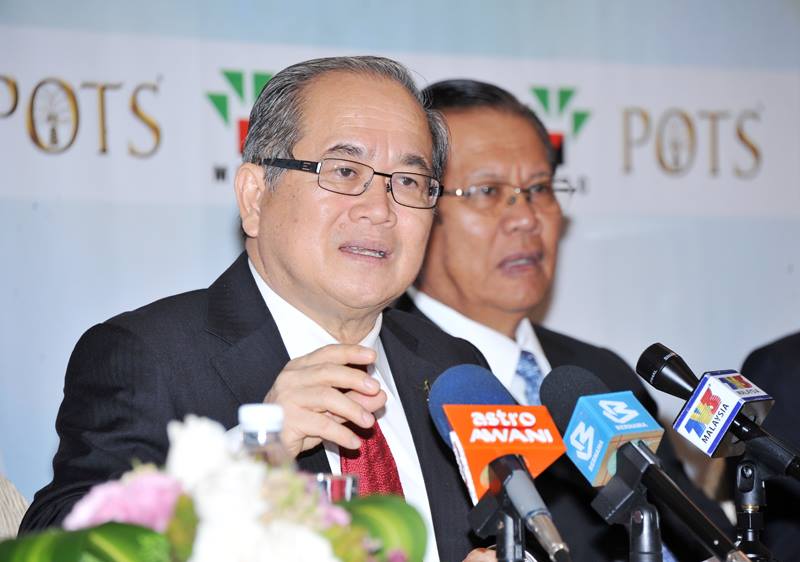KUCHING, May 29 — Longhouse visits during the Gawai Dayak celebration next Monday is completely prohibited due to the building infrastructure, said Sarawak Deputy Chief Minister Douglas Uggah Embas.
The limit of 20 visitors to people’s homes, as set by the federal government as part of the standard operating procedures (SOP) for the Raya celebration in the past week, is deemed impractical for longhouses, as safe social distancing cannot be practiced with a big crowd.
“It is very difficult to fix the number, that’s why we decided not to allow any visit. For example, my longhouse, we have 20 doors. If we allow 20 people per door, that’s 400 humans!” explained Uggah at a press conference today.
“Our advice is to ‘jangan ngabang’. Let it be between the family within that longhouse. We apologise for making restrictions, but it is done with the noble objective to cut off the Covid-19 chain,” explained Uggah at a press conference today.
He further shared that he himself would not be visiting his longhouse during Hari Gawai due to the current situation with Covid-19.
“It is the responsibility of everyone, like myself, I cannot go back to Betong, although my family hopes for me to go back and spend time with them, but I tell them I cannot because this is not the normal time,” he said.
The federal government yesterday approved only three churches in Bintulu, Sarawak to reopen from June 10, prompting the question: “What about the other places of worship in Sarawak’s green zone?”. Uggah responded that he is also “asking the same question”.
The three churches are Hope Bintulu, IFGF Bintulu Sarawak, and IFGF Sungai Plan in Bintulu, all of which are Christian evangelical churches.
Uggah explained the Sarawak Disaster Management Committee (SDMC) has directed a task force to work out the activities that can open after the Conditional Movement Control Order (CMCO) ends on June 9.
“So, I discussed with Dato Seri Fadilah (Minister of Works) just now to inform the understanding that Sarawak SDMC has been given the responsibility to decide on that matter as we move towards the end, and I hope is the end of the CMCO.
“As for the churches, the SDMC will decide how the SOP will be followed by them. We will decide not only the churches, but also the tokong, the Buddhist (places of worship), and the temples,” said Uggah.
He further expressed his astonishment that the federal authorities chose those three churches to resume worship services. “I was surprised that KL picked the three that (don’t) respond to, or come up with the list,” he said.
Two New Contact Tracing Apps
Today, the Sarawak state government also announced the launch of two mobile applications to strengthen the state’s contact tracing efforts—COVID Trace and Q-Munity.
COVID Trace is intended to enable the tracking of contacts easily by the health ministry, where the application records detailed information of anyone who comes in close proximity of one metre of the phone’s owner.
“Who are the close contacts of that particular person (who tests positive for Covid-19), this is very important for all of us, so we ask Sarawakians to download the COVID Trace,” said Uggah.
On the other hand, Q-Munity is intended to enable business owners to record customers’ information easily as they visit their premises, eliminating the need to record their name and phone number on pen and paper as currently practiced.
Customers will only need to scan the QR code at the business premises they visit with the Q-Munity application before entering the premises. The QR code will be distributed by the state government to establishments within the state starting from those in Kuching, as reported by the Deputy Chief Minister.
Sarawak today reported zero new Covid-19 cases, which means that the total number of cases remains at 552. There are 72 new Persons-Under-Investigations (PUI) as of today and a total of 428 PUI, including 339 Persons-Under-Surveillance (PUS), whose Covid-19 test results are still pending.
Rabies Outbreak In Mukah
The Sarawak Disaster Information (SDI) today reported one new area of rabies outbreak in Kampung Tian, Matu, Mukah, which marks the 64th area that is declared as a “rabies area” under the state’s rabies regulation.
Areas that have been declared as Rabies outbreak areas include seven in Kuching, five in Sri Aman, two in Sibu, one in Miri, five in Sarikei, one in Kapit, four in Bintulu, four in Samarahan, three in Betong, 22 in Serian, and five in Mukah.
The dog bite case received by the Sarawak Veterinary Services Department on May 25, previously mentioned by Uggah, involved a five-year-old boy from Sibu who was bitten by a pet dog on May 24, in which the dog in question tested positive for Rabies on May 27 through the Antigen Rapid Rabies Ag Test, a test that detects the rabies virus in the brain tissue of canine, bovine or raccoon dog. The child has reportedly been given the necessary treatment.
Animal bites in Sibu, especially for dogs, are still high with an average of 35 per cent monthly prevalence rate, or about 300 cases per month, as reported by the Sarawak Veterinary Services Department (JPVS).
In response to the update on the rabies epidemic within Sarawak, Uggah urged the public to never delay seeking treatment for any animal bite, noting that the rabies clinics are still operating amid the Covid-19 pandemic.
“Our rabies clinic is still operating at this time in all the hospitals in Sarawak. If you get bitten by a dog (or other animals), please go to the hospital for treatment.
“From my experience for the last four years, those who get immediate treatment, the chances of getting well is very, very high. Those who are slow to get treatment, well, that is the problem,” Uggah explained.
The rabies outbreak in Sarawak was declared on July 1, 2017, and is now in its fourth year of the epidemic. The JPVS reported a total of 1,254 animal bite cases from January 2020 to May 27, 2020.
The number of animal bite cases sampling through the Direct Fluorescent Antibody Technique (FAT), which detects the presence of the Rabies virus antigen, and Polymerase Chain Reaction (PCR) test, which directly detects the presence of the virus antigen, received to date was reported to be 116 cases with a 32.8 per cent positive rate.








